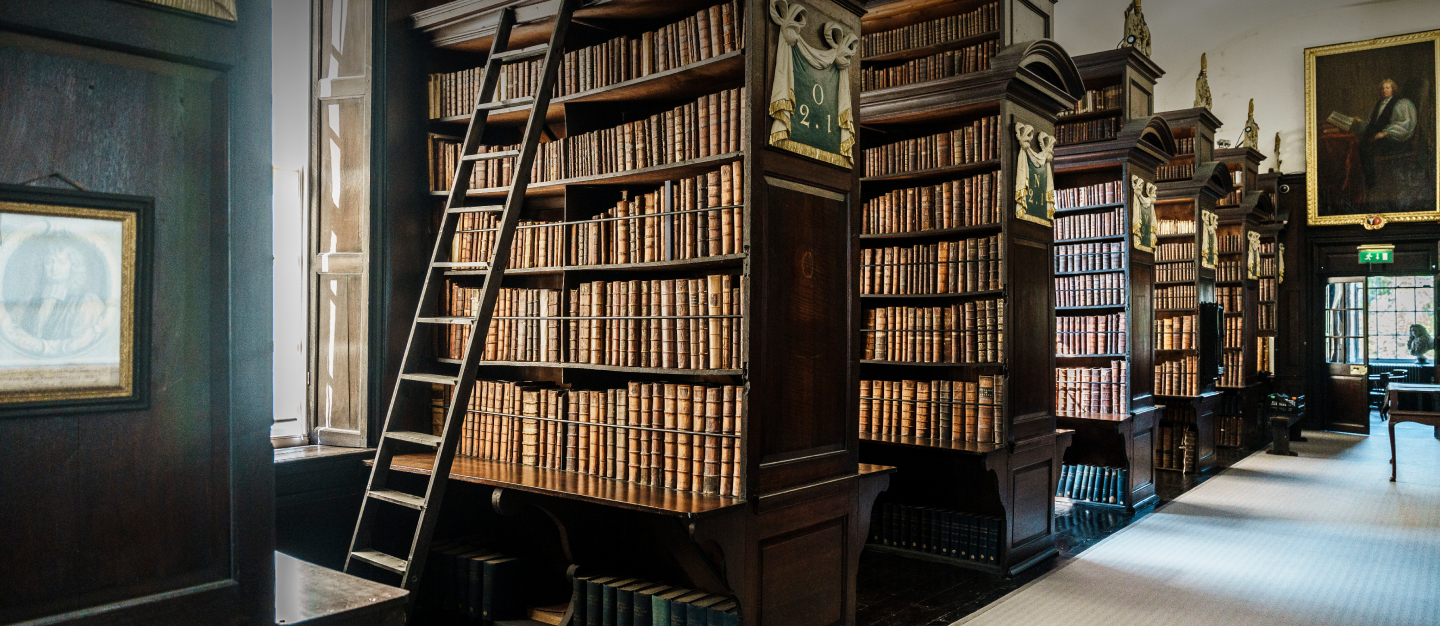
What We Do
Background
Marsh’s Library is located in St Patrick’s Close, beside St Patrick’s Cathedral, Dublin. It is a beautifully preserved library of the early Enlightenment. It was built with money provided by Archbishop Narcissus Marsh, an academic and book lover with a strong belief in the public utility of education and learning. The Library was incorporated in 1707 by an Act of Parliament called ‘An Act for Settling and Preserving a Public Library for Ever’. For the first century and a half of its existence it was the only public library in Dublin.
Today, it is a charitable trust open to the general public, students and scholars, and is independent of any and all other institutions and entities. It is governed under a board of trustees known as the Governors and Guardians. Read more about the governance and finance of the Library here.
Our Charitable Purpose
The Library’s mission is to preserve and maintain its rare books and manuscripts, to acquire similar by donation, to cherish its distinctive building heritage, and to establish Marsh’s as a cultural and intellectual hub for visitors, students and scholars. This mission is delivered under four strategic pillars comprising: Collections; Engagement; Discovery; and Built Heritage as outlined in our Strategy Document.
Vision for the Future
Marsh’s Library is both a high-quality visitor and tourist destination, and an internationally-recognised centre for excellence in the study of early printed books.
The Library is an important repository of a shared European cultural heritage and a wider history of human thought and experience. The Library will preserve its important collections for the benefit of local, national and international visitors. In terms of numbers, most visitors will be non-academic tourist visitors, and we aim to develop facilities which will enhance their experience. However, in terms of the intellectual and cultural importance of the institution, the Library aims to become a ‘must use’ collection for scholars interested in European history, literature and culture between roughly 1500 and 1750. The Library will use technology to facilitate the sustainable use of its resources by different groups of users.
In seeking to accomplish these objectives it is:
Welcoming to a variety of users, providing a secure and stimulating environment for study and research
Dedicated to a belief in the cultural and societal value of learning and knowledge
Dynamic in using new and emerging technologies to shed light on the treasures of the Library
Ambitious in terms of making Marsh’s Library a learning studio for the most influential scholars and the best students of the early-modern period (1500–1750) from around the world
Collaborative in working with other libraries, cultural institutions and academic partners nationally and internationally on a variety of research projects, events and initiatives.



